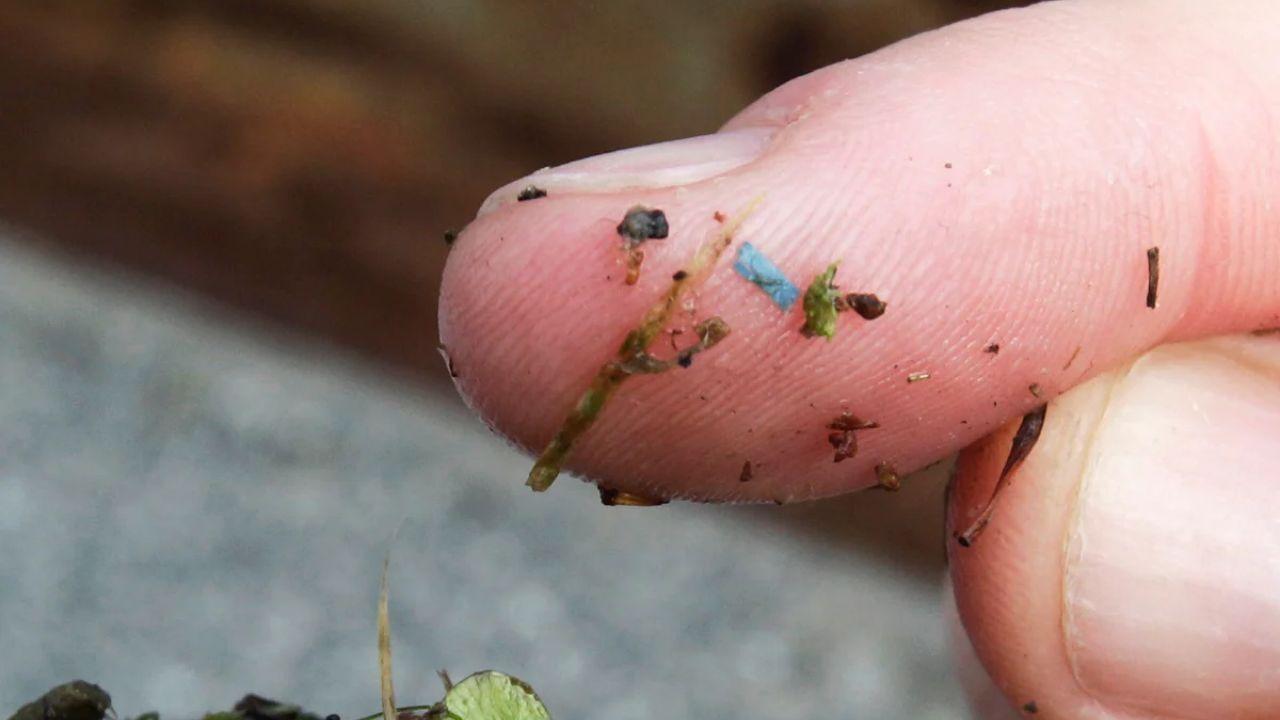
Post by: Zayd Kamal
Photo: AP
A recent study has revealed alarming new insights about the presence of microplastics in unborn offspring, raising serious concerns about the impact of environmental pollution on maternal and fetal health. Researchers discovered that tiny plastic particles, known as microplastics, can pass from pregnant mothers to their unborn babies. These plastics have been found in critical organs like the lungs, hearts, livers, kidneys, and even the brains of newborn mice that were exposed to polyamide-12 (PA-12) through inhalation.
This groundbreaking research indicates that during pregnancy, microplastics can cross the placental barrier, reaching the developing fetus and embedding in vital organs. The presence of these plastics in organs essential for life raises significant concerns about potential long-term health consequences for exposed offspring. While the immediate effects are still being studied, the idea of plastic particles settling in such crucial areas is deeply concerning.
Stay informed with the latest news. Follow DXB News Network on WhatsApp Channel
Researchers have long known that micro- and nanoplastics, which are produced through the degradation of everyday consumer products, can enter the human body through various means. These tiny particles can be inhaled, absorbed through the skin, or ingested through food and water. Once inside the body, they have the ability to cross the placental barrier, potentially depositing in fetal tissues. However, what has remained unclear until now is whether these particles persist in the tissues long after birth.
The study provides new evidence that they do, at least in animal models. In this research, conducted on rats, it was found that microplastics remained in the tissues of newborn rats long after they were exposed in utero. This finding has important implications for human health, suggesting that microplastics could similarly remain in the tissues of human babies, potentially leading to unknown long-term health effects.
The study's lead researcher, an associate professor of pharmacology and toxicology, explained the significance of the findings. "Nobody wants plastic in their liver," she said. "Now that we know it's there – as well as in other organs – the next step is to understand why it's there and what that means for overall health."
To conduct the study, the research team exposed six pregnant rats to aerosolized food-grade plastic powder for 10 days. This powder consisted of polyamide-12, a commonly used plastic. The researchers chose rodents as test subjects due to the similarities between human and rodent pregnancies, particularly the fact that both species possess a hemochorial placenta, where maternal and fetal blood do not come into direct contact.
Two weeks after the rats gave birth, the researchers examined the tissues of two newborn rats, one male and one female, to assess the presence of microplastics. The same type of plastic inhaled by the mother during pregnancy was found in the lung, liver, kidney, heart, and brain tissues of both newborns. By contrast, no plastic particles were found in the control group, which was not exposed to microplastics during pregnancy.
The persistence of these plastic particles in the organs of newborn rats is a troubling discovery, as it suggests that microplastics could remain in the tissues of human infants, potentially leading to harmful health effects over time. This study builds on previous research that has demonstrated how easily micro- and nanoplastics can enter the human body, but it adds a new layer of concern by showing that these particles may stay in the body long after birth.
The long-term health risks of having microplastics embedded in vital organs like the brain, heart, and lungs remain largely unknown. However, the potential dangers cannot be ignored, given that these particles have the potential to interfere with normal organ function. Microplastics are already known to cause inflammation and cellular damage, and their presence in such critical areas could have lasting implications for the health of future generations.
This research has highlighted the urgent need for further studies to determine the full extent of the impact of microplastic exposure during pregnancy. While this particular study focused on rats, the similarities between human and rodent pregnancies suggest that similar outcomes could occur in humans. The discovery that microplastics can settle in vital organs during the early stages of life points to a larger issue: the pervasiveness of plastic pollution in our environment and the need for stricter regulations to limit exposure.
The findings from this study raise important questions about the safety of plastic materials in everyday products and the potential health risks they pose to pregnant women and their babies. As more research is conducted on the long-term effects of microplastic exposure, it is becoming increasingly clear that these tiny particles are not as harmless as once thought. Their ability to cross the placental barrier and remain in the body suggests that microplastics could have far-reaching consequences for human health, particularly for vulnerable populations like newborns.
In conclusion, this new research underscores the urgent need for a deeper understanding of how microplastics affect maternal and fetal health, as well as the potential long-term health risks they pose. As plastic pollution continues to infiltrate every aspect of the environment, from our air to our water to our food, it is crucial to address the growing threat it represents to human health, especially for the most vulnerable members of society—newborns.
#trending #latest #Microplastics #EnvironmentalHealth #MaternalHealth #FetalHealth #PlasticPollution #NewbornHealth #LongTermEffects #Toxicology #HealthResearch #PlasticInOrgan #EnvironmentalImpact #PlasticExposure #ProtectOurFuture #SustainableLiving #CleanEnvironment #breakingnews #worldnews #headlines #topstories #globalUpdate #dxbnewsnetwork #dxbnews #dxbdnn #dxbnewsnetworkdnn #bestnewschanneldubai #bestnewschannelUAE #bestnewschannelabudhabi #bestnewschannelajman #bestnewschannelofdubai #popularnewschanneldubai

Vikrant Karyakarte: The Artist Who Paints the Rhythm of Life....Read More.

PM Modi will visit Jeddah to meet Crown Prince MBS. Talks will cover strong ties, strategy, and new MoUs. This is his first visit in his third term....Read More.














Humanoid Robots Race with Humans at Half-Marathon in China
21 humanoid robots raced alongside runners in the Yizhuang half-marathon, showcasing robotic enginee

Woman Brain-Dead After Paris Cryotherapy Accident
A woman is brain-dead after a fatal cryotherapy accident in Paris that also claimed a gym worker’s l

A Chinar Leaf in the Desert: Zubair Kirmani and the Journey of Kashmir at World Art Dubai
A Chinar Leaf in the Desert: Zubair Kirmani and the Journey of Kashmir at World Art Dubai

Carla Gía Brings the Language of Duality to World Art Dubai 2025
Carla Gía Brings the Language of Duality to World Art Dubai 2025

Not Just a Painting, It’s a Pulse: Deena Radhi at World Art Dubai 2025
Not Just a Painting, It’s a Pulse: Deena Radhi at World Art Dubai 2025